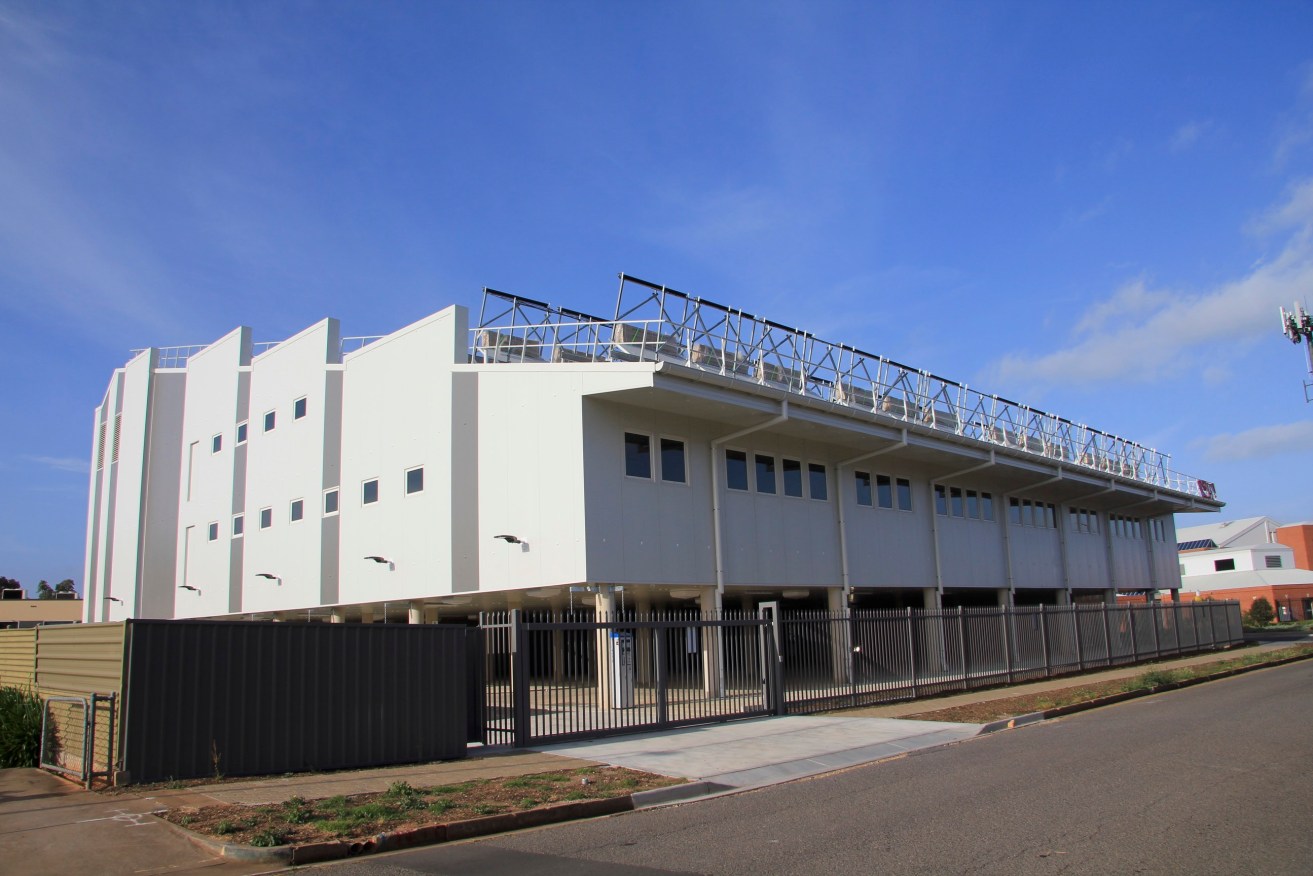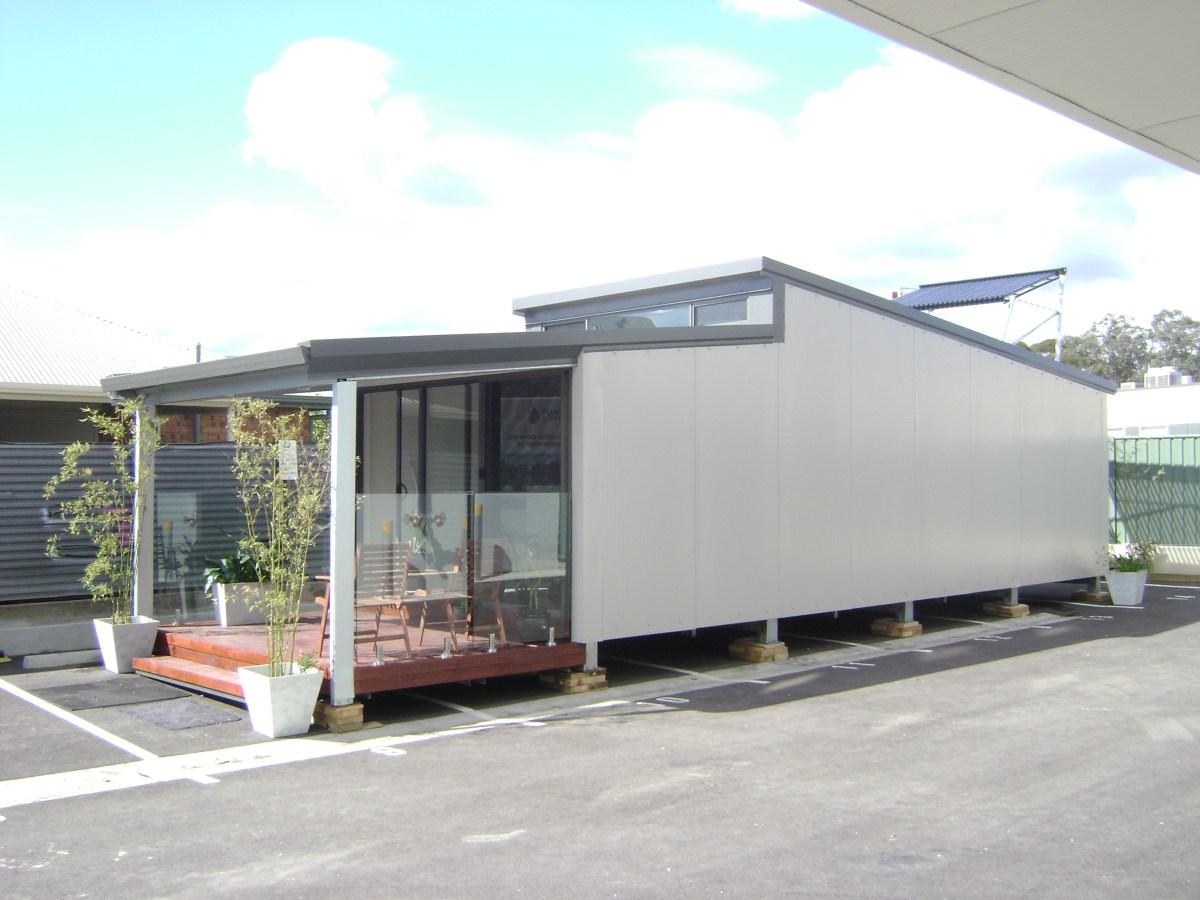Adelaide office block cuts its cord to the electricity grid
A four-storey office building powered by a combination solar and wind energy in Adelaide’s northern suburbs has cut its connection to the electricity grid in what its owners claim to be a world first.


The Fluid Solar office building in Adelaide's north has cut its cord to the electricity grid. Supplied image
The $8 million Fluid Solar headquarters in Elizabeth Vale is powered by a combination of photovoltaic (PV) solar panels, concentrating solar thermal tubes and wind turbines on the rooftop. The building contains more than two megawatt hours (MWh) of energy storage capacity, comprising around 90 per cent thermal storage with the remaining 10 per cent provided by conventional battery storage.
Fluid Solar House has been operating without the use of the electricity grid since April to test its technologies before Monday afternoon’s cord-cutting ceremony.
The building will be used as the small company’s headquarters but will also become a co-working space for other innovative northern suburbs’ startups.
Surplus electricity generated at the site will be used as part of Tesla’s car-charging network, with 11 electric vehicle bays that will be supplied completely by solar power harvested from a 98 kWp array of 378 PV solar panels on the building’s roof.
A sustainable “tiny house” has also been built – in just three days – in the building’s car park to showcase the company’s low cost, low energy accommodation.
Fluid Solar managing director Associate Professor Roger Davies has been working on the technology since 2008 and said the solar thermal element was the key to the building’s success.
“Storage of heat is dramatically cheaper than battery storage and because we’ve got the other end, which is the devices that use thermal energy directly for their heating and cooling, it means that 60-70 per cent of the building’s energy requirements are met using solar thermal as opposed to solar PV technology,” he said.
“That allows us to use the rest of the roof – about 60 per cent – to do a conventional PV.
“So we have a hybrid model between a smaller battery pack running the lights, the lift, the fan systems and so on and the heavy lifting is done by the solar thermal.”
Wind turbines on the roof are also in place to fill the void for about 20 days in winter when long stretches of cloudy weather reduce the effectiveness of solar. The surplus electricity will be used to power the car charging station.
Davies said the company was working on how to retrofit the system to existing office buildings. He said this would reduce the burden on the South Australian electricity grid, particularly on scorching summer afternoons.
“That’s certainly feasible from a technical point of view and once clients accept that it’s also economically attractive to them we see no reason why that technology couldn’t be rolled out across a large percentage of existing buildings.”
Fluid Solar has a 1200sq/m factory in nearby Edinburgh and is looking to employ Holden workers to help manufacture its products. It has 24 orders for small houses, which range in size from 40sq/m to 160sq/m.
The houses are powered by similar renewable energy systems as the office building, can be run off-grid and can be built on site in a matter of days.
“Our order book is probably filled till Christmas but we’re certainly looking to have some projects moving into 2018 to keep the momentum going and build production,” Davies said.
“We’ve looked at 5000sq/m as our next step up when demand picks up. I’ve got a joint arrangement with an existing manufacturing business to gear up and help build large volume if we can show the demand.”

Fluid Solar’s “tiny” demonstration house. Supplied image
Davies said the small modulated houses had a number of markets including as backyard granny flats, off-grid holiday homes and housing for people on fixed incomes.
He said the fast build times, low or no ongoing electricity costs and a price of about $1000 per square metre compared with $1200 – $1800sq/m for traditional houses, made the product very affordable.
Fluid Solar has approval to build a 20-apartment complex in Munno Para, which Davies hopes to have completed before Christmas.
“One thing I would very much like to do is build these as medium density urban and suburban housing because we believe we can get the cost down to a point where people on low fixed incomes can afford to rent or buy over time,” he said.
“My belief is that our strategy of using a building that is intrinsically low energy consuming will ultimately become the dominant feature in architecture – we will move away from poorly insulated, glazed energy hot boxes and people will start to accept that the advantages of low consumption and low impact living are more important.”
Fluid Solar is seeking a series of patents in a variety of jurisdictions including China, India, Japan, North America and Europe.
“We can see a very large potential if we can get through this first step of proving the technology is stable, cost effective and reliable,” Davies said.




